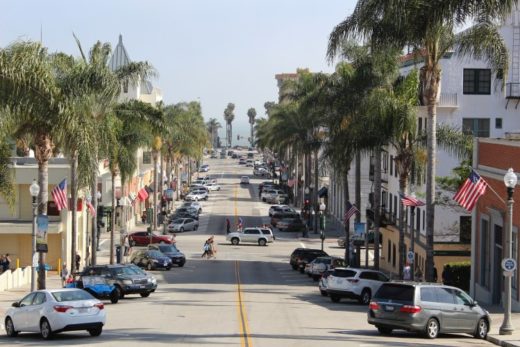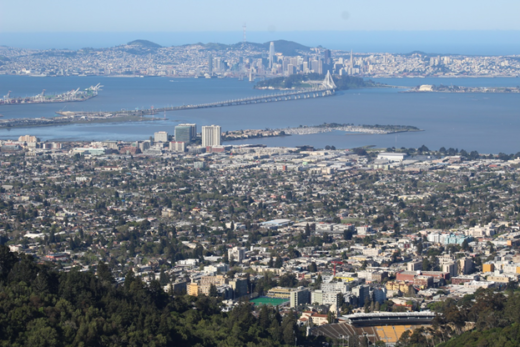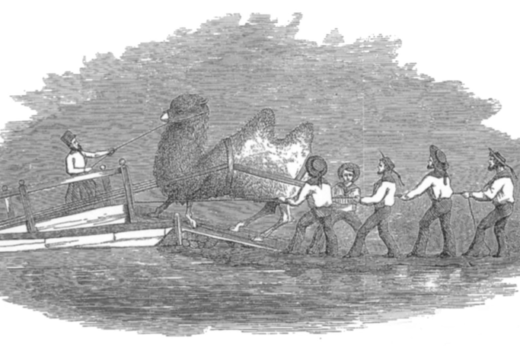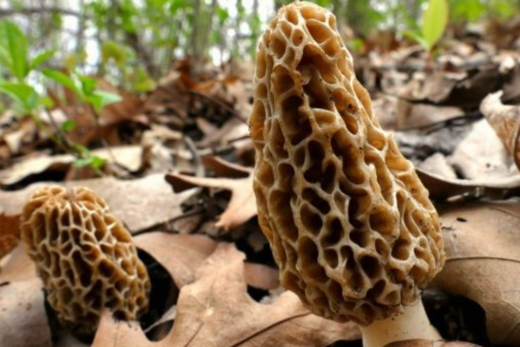Individual regions of California offer unique beauty, stories, and lessons in geography that can rival entire states, particularly where two regions commingle. One example is where the eastern Sierra Nevada abruptly plunges down into the Basin and Range toward Nevada. Here, you can escape into remote landscapes and isolated traditional cultures on the other side of the great mountain barrier, as if you have travelled thousands of miles away from the crowds in our state’s great cities that face the Pacific Ocean. You might also find some spectacular fall colors.
These eastern slopes that face inland are dominated by continental air masses. Summer’s daytime heat yields to some of the coldest temperatures in the nation at night, thanks to the thin, dry air. Temperatures at select locations (often high-altitude basins where cold air masses can pool) drop well below 0 degrees F during winter. Hardy species that can withstand such extremes mix together in resilient communities that may be more familiar to the Rocky Mountains. Add accessible water and you will find some of the finest displays of autumn colors in the state when trees such as cottonwoods (often at lower elevations), willow, and the rarer aspen ((Populus tremuloides) often found at higher elevations) lose their chlorophyll greens and turn dormant to signal winter’s approach. In some cases, these locations were within view of the magnificent glaciers that reworked eastern Sierra Nevada landscapes during hundreds of thousands of years of cooler and wetter glacial periods.

Thousands of years ago, as climates warmed and the glaciers retreated, plant communities were left to evolve in drier climates. We find their stranded remnants as relicts snaking mostly along riparian woodlands in protected canyons or clustered around springs where they have access to precious water. And if you were wondering why these landscapes aren’t blanketed with the seemingly endless fall colors that spread from New England to Appalachia each season, you forgot the magic limiting factor here: water. Only about 1% of Basin and Range landscapes are riparian habitats. Soils, fires, microclimates, slope exposure, and climate change and other human impacts also help determine the nature of these communities.
So it is here that we take you on a journey to find California’s spectacular autumn colors among native plant communities most people might not include in their stereotyped California landscapes. The time is late October 2018, when the majority of leaves have lost their chlorophyll, but haven’t fallen off the deciduous trees. Our search leads us toward the West Walker River and East Walker River headwaters near the Nevada border southeast of Lake Tahoe, where streams feed the upper Walker River Basin. And once again, we quickly discover that these landscapes have plenty of concomitant stories to share.
In this case, we see how two different drainages start in spectacular mountain scenery and then cascade off the eastern slopes of the Sierra Nevada to deliver precious water to high desert landscapes below. Both rivers turn north, separated on opposite sides of the Sweetwater Mountains before flowing out of California and into Nevada. And as is common with so many streams in the West, human demands (mostly for agriculture) are often greater than the discharge from these rivulets.
The familiar results are less water for downstream ecosystems and users as the West and East Walker Rivers flow into Nevada and finally merge. By the time what’s left of the Walker River makes an abrupt right turn south and struggles toward Walker Lake in Nevada, there is little or nothing left, except during flood years. By then, free-flowing water must have survived abuse from a variety of stakeholders through several jurisdictions and land uses. Especially during dry years, downstream fish, wildlife, and entire riparian ecosystems struggle along with the humans who depend on these water diversions for survival.
So this starts out as a simple story about how a history of water, fire, and ice have combined to produce some of the state’s most spectacular fall colors. It quickly becomes a more complex drama that involves water diversion and water rights among multiple stakeholders and between bordering states and Indian reservations. Issues involving groundwater access and quality, irrigation for agriculture, domestic water quality, fishing and other ecotourism, watershed and ecosystem management and restoration, and sustainable land uses all float to the surface. It finally ends well beyond the boundaries of our California project in a threatened and protected Lake Walker, a terminal lake in Nevada’s high desert. During more than 100 years of human diversions, lake levels dropped 160 feet and total dissolved solids increased ten times up to 2010 in this water that often began as crystal clear Sierra Nevada snowmelt.
All of these undercurrents lurk among the relatively remote small town America landscapes and cultures near Hwy. 395 where the ever-changing weather and climate, the best fishing holes, and the tastiest homemade pies might dominate local conversations.
Our images begin just south of and then around Twin Lakes near the headwaters of the East Walker River. We will then explore the West Walker River as it cascades through its gorge and then spreads into its Antelope Valley.
We end by skipping south and away from these watersheds to find color in Round Valley just above and northwest of Bishop and below the lateral and terminal moraines left by glaciers similar to those mentioned earlier, a rangeland on the northern edge of an Owens Valley with a very different, but epic water rights story of its own.
Highway 395 is the remarkable thread that ties these images together, since all of these locations are conveniently accessible, especially by adding a short drive or hike up a local canyon. The colors get easier to find north of Bishop. Additional patches of fall colors can be found in canyons and on slopes near Hwy. 395 north of Reno, into more remote northeastern California. This would make a good excuse for another autumn excursion into the colors of the Warner Mountains.























